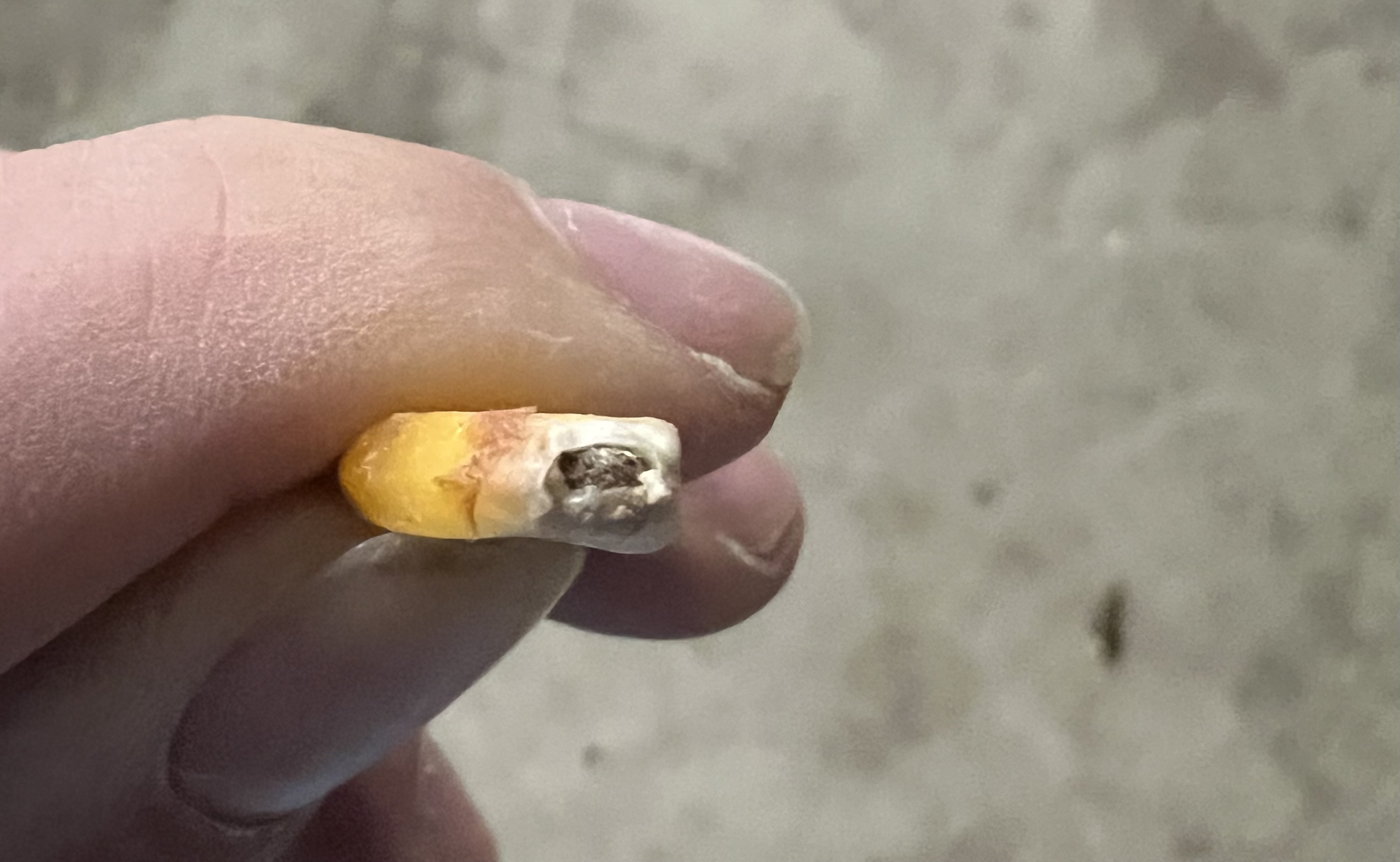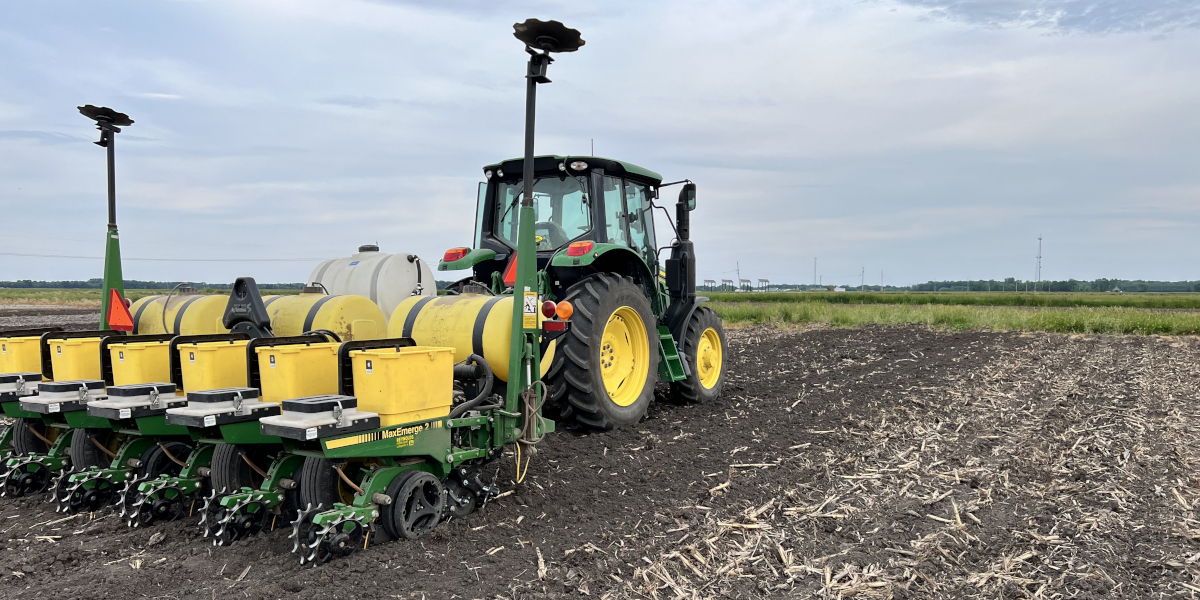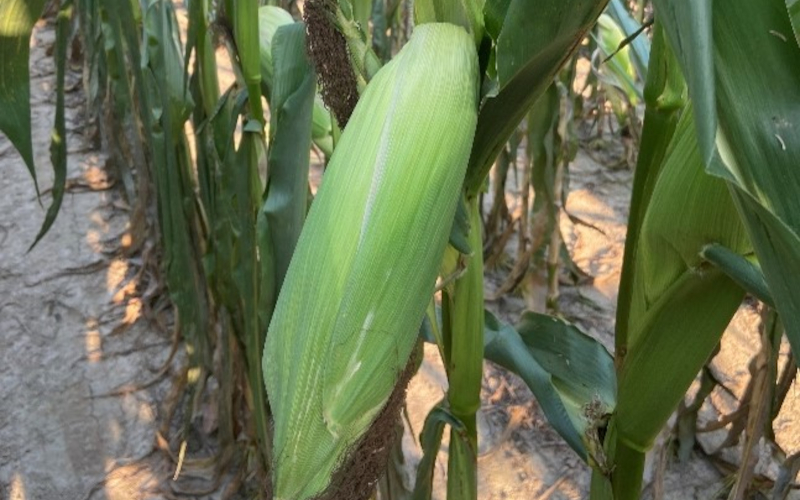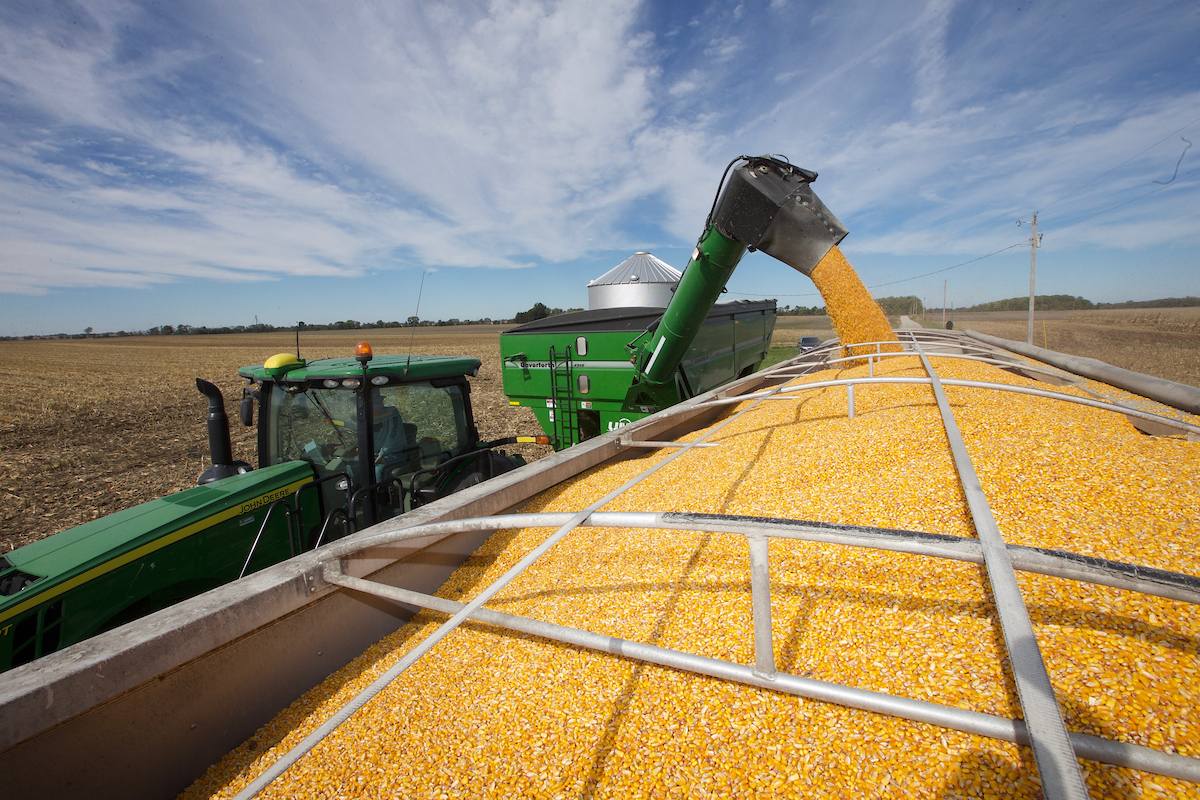Understanding Black Layer Formation in Corn
The use of the term “black layer” is often a universal method among farmers and agronomists for determining when a corn plant has finally reached physiological maturity. This occurrence on the tip of the kernel appears because as a corn plant reaches maturity, the cells at the tip of the kernel or the cob attachment point, compress or collapse into a dense layer that visibly appears “black” (Figure 1). Once this occurs, it is an indication that the movement of sugars from the plant are no longer being moved into the kernel. One of the major functions of the cells at the tip of the kernel are to absorb and transfer plant sugars produced by the plant (photosynthesis) into the kernel. Therefore, when these cells are no longer functioning and the “black layer” is visible, the plant has reached physiological maturity.
In many years and environments, “black layer” formation or physiological maturity occurs “naturally” or “timely”, however in other circumstances it can often appear that it occurs prematurely, or delayed, which often accompanies the question of will it ever occur? Although this is frustrating and can add complexities in getting the corn harvested in a timely manner, the answer is that the corn plant will always reach black layer, it is just often dictated by factors such as growing degree days (temperature) and sucrose (sugar) supply to the developing kernel.
The main factor that influences the formation of black layer includes plant maturity and senescence caused by accumulation of growing degree days (temperature). However, black layer formation can also occur prematurely due to severe photosynthetic stress (e.g., hail damage, foliar disease), sustained periods of very cool weather (without a frost), and after a lethal frost. In many areas of Indiana (Northern and Eastern areas specifically) in 2023, corn planting date was later than normal due to early-season conditions and temperatures have been cooler than normal which means growing degree day accumulation has been less that previous years (Nielsen, 2023). These factors have likely lead to the observance of slowed plant maturation (black layer) and slowed grain dry down. In addition, higher nitrogen rates and delayed fungicide applications may also have played a role in sustained plant health and delayed maturation and dry down.
One comment we have received this year is that the thought of the wildfire smoke that occurred earlier this year contributed to the slowed plant maturation and dry down in these areas (Nielsen, 2023), but that is likely not the case. Haze and poor air quality from wildfire smoke can impact plant photosynthesis both negatively and positively and is very complex and can be difficult to determine its exact impact on the crops in a given year. However, it is important to note that wildfire smoke does not directly influence how rapidly plants progress through growth stages and toward maturity.

Figure 1. Presence of corn “black layer” at the tip of a corn kernel from the 2023 growing season.
Additional Resources:
Carter, P. Kernel Black Layer Formation in Corn: Anatomy, Physiology, Causes. Pioneer Agronomy. https://www.pioneer.com/us/agronomy/kernel-black-layer-formation.html
Nielsen, R.L. 2023. Slow corn dry down in the field – 2023. Corny News Network. Purdue Univ. Ext. https://extension.entm.purdue.edu/newsletters/pestandcrop/article/slow-corn-drydown-in-the-field-2023/






